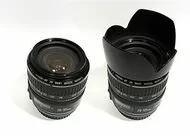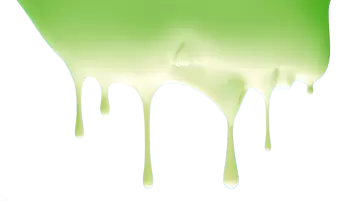Learn the truth about dust creating orbs in photographs.
Orbs, when seen within photographs, are often mistaken for ghosts. So, we thought it necessary to spend some time looking further into orbs recorded by cameras. Can dust cause orbs in pictures? Read on...
The digital camera has allowed paranormal investigators the ability to take more photographs, while allowing them to be uploaded to a computer for examination. With the rise of technology, so has risen the onslaught of false orb, ghost photographs.
Some orbs are easy to detect as being created by moisture (rain, snow, vapor), light reflecting off of shiny objects, insects, sunlight shining back into the camera body (lens flare), or even the photographer's hair too close to the lens. But many orbs in ghost pictures have turned out to be simply dust. See false dust orb ghost pictures.
We feel there is little doubt that some orbs are unexplainable balls of light that are most likely spirit energy. However, after looking at thousands of orb photographs, we have come to the conclusion that many of them contain orbs created by dust particles. Dust is everywhere and when it floats (typically downward) in front of the camera lens, it will be recorded by the digital camera when light shines onto it. The further away the dust particles, the smaller the orbs; the closer the dust particles are to the lens, the bigger and blurrier they will appear in photographs.
Dust can come in many forms (such as pollen, lint, dirt) and could account for some of the variations in orb shape and color. What makes it even more difficult is that we found that the available array of digital cameras record dust differently. With all the new camera design styles, we believe that a problem has developed due to progress in making cameras smaller: the flash unit has gotten much closer to the camera's lens. When dust floats in front of the camera, and especially when the flash unit is close to the lens, the end result is often orb-like anomalies within the photograph. This is due to the camera flash reflecting off of the dust and being recorded by the camera as a ball of light. So, the further the flash unit is located away from the lens, the less likely dust orbs will be recorded. Even more confusing is that the shape of the dust orb and its internal appearance can vary greatly due to different types of camera lenses, the shape of the camera aperture, etc. So, the frequency of orbs showing up in photos will vary depending on how each digital camera is designed.
Recently, I observed a ghost investigator using a new digital camera and so I was able to look at the photos through the viewfinder. The investigator asked me if these were dust orbs or could they possibly be ghosts? I asked the photographer to take another picture while I secretly crinkled some toilet paper above (and slightly in front) of the lens. The digital camera recorded the same balls of light again, but this time in high quantity. Those who observed this thought I was sprinkling some sort of powder in front of the camera to create this effect, but were surprised to learn that I only had crumbled some pretty stiff toilet paper just above the front of the camera. The lint dust created by the friction was just enough to float downward and in front of the lens, while the camera's flash illuminated the fine particles.
For those who are skeptical that dust could appear in photographs as balls of light, I recommend trying to crinkle some toilet paper in front of your digital camera to learn how it specifically records dust particles. For those who will not do this experiment or simply do not believe my report to be true, then I suggest watching proof of the dust orb effect: Dust Orb Video.
So, how can we stop the false orbs? I would first experiment with your camera's flash settings and see if any of them (especially a slower one) help reduce the amount of orbs recorded. Be sure and stay away from "night mode" flash settings, as this camera setting is only to be used with a tripod. Otherwise, blurry photos and orange haze will look quite ghostly. The night mode setting uses a longer exposure time and is the reason the camera will create blurry false energy pictures that are not ghosts.
Your second option would be to see if some sort of lens hood is available for your specific digital camera in order to shield dust from floating directly in front of the lens. Lens hoods usually are used to shield the sun from shining into the camera body (which will also create orb-like spots known as lens flare). Perhaps, you could construct a small dust awning of your own to just shield the top of your digital camera's lens from dust. Cutting out a small piece from thin, flexible plastic sheeting may work by taping it to the camera body just above the lens to act like an awning.
Be sure and read, Get Rid Of Dust Orbs and Reduce Dust Orbs.
Dust orbs can also show up on video. Watch this Dust Orbs Video and see how a blanket creates orbs after moving it. Video cameras can also be altered similarly by attaching a thin flower pot over the protruding lens to create a round box where dust cannot float down in front of the lens and be illuminated by IR lighting. Ghost Gadgets developed this method for their IR video cameras and they call it the DEVA.
Below: Lens with and without a plastic hood. You can also try and print out your own lens hood to shield dust: Free Lens Printable Lens Hoods.


